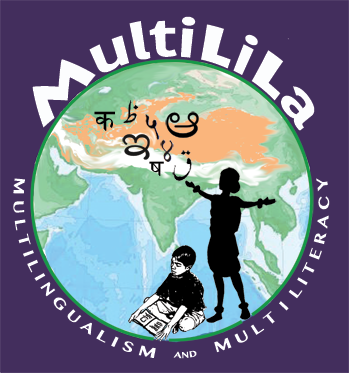How Cognitive Abilities May Support Children’s Bilingual Literacy Development in a Multilingual Society
Vogelzang, Margreet, I.M. Tsimpli, and Minati Panda
Languages 2022, 7(1), 33
(https://doi.org/10.3390/languages7010033)
Abstract
Underprivileged but highly multilingual Indian children often show low literacy performance. As a complicating factor, these children are often expected to develop literacy not just in the regionally dominant language but also in English. As good literacy skills are crucial for later academic development, it is important to identify factors that could support these children’s literacy development. We, therefore, investigated whether cognitive abilities are associated with literacy development and whether they are so in the same way for both of these children’s languages. In a longitudinal design (Std. 4 and Std. 5), literacy data in Hindi and English were collected from 336 children in Delhi, India. In addition, three cognitive tasks (Raven’s, 2-back, Flanker) were performed. We found that bilingual literacy development is evident across children, although the starting point is low in some cases. Fluid intelligence (Raven’s) and working memory capacity (2-back) significantly positively related to literacy performance in Std. 4 and Std. 5 in both Hindi and English. Literacy improvement from Std. 4 to Std. 5 also related to cognitive abilities—working memory capacity (2-back) for Hindi and inhibitory skills (Flanker) for English—but in the opposite direction: Children who had lower scores on these cognitive tasks show more improvement, indicating that they are in the process of catching up with their higher-performing peers—although they have not fully managed to do so by Std. 5



